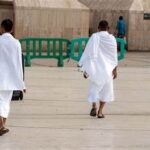Introduction to Umrah
Umrah is a deeply significant Islamic pilgrimage to the holy city of Makkah, Saudi Arabia. Unlike Hajj, which is obligatory for Muslims once in a lifetime if they are financially and physically able, Umrah is a voluntary act of worship. It can be performed at any time of the year and holds a special place in the hearts of Muslims worldwide. Known as the “lesser pilgrimage,” Umrah provides an opportunity for spiritual rejuvenation, a way to seek forgiveness, and a means to draw closer to Allah.
Significance of Umrah
Umrah carries immense spiritual merit and serves as a means of purification. It is a time for Muslims to seek forgiveness for past sins, make supplications, and renew their faith. The pilgrimage symbolizes the unity of the Muslim Ummah, with believers from all over the world gathering in one place, irrespective of race, nationality, or status, to worship the One God. Performing Umrah allows pilgrims to cleanse their souls and re-establish their commitment to Islam.
The Rituals of Umrah
The rituals of Umrah are simple yet profound, comprising four key acts of worship:
- Ihram: The pilgrimage begins with the state of Ihram, a sacred state of purity and devotion. Pilgrims wear specific clothing—two white seamless garments for men and modest, loose-fitting clothing for women. The intention (Niyyah) to perform Umrah is made, and pilgrims recite the Talbiyah, a prayer expressing their readiness to fulfill the pilgrimage.
- Tawaf: Upon reaching the Kaaba, the holiest site in Islam, pilgrims perform Tawaf, which involves circling the Kaaba seven times in a counterclockwise direction. This act symbolizes the oneness of Allah and the unity of Muslims around the world. Each circuit begins with the recitation of prayers and the kissing or pointing towards the Black Stone (Hajar al-Aswad).
- Sa’i: After Tawaf, pilgrims proceed to perform Sa’i, a ritual that commemorates Hagar’s search for water for her son, Isma’il. Pilgrims walk seven times between the hills of Safa and Marwah, located near the Kaaba. This act signifies perseverance, trust in Allah, and the enduring bond between mother and child.
- Halq or Taqsir: The final ritual of Umrah involves cutting a portion of hair for men (Halq) or trimming a small part of the hair for women (Taqsir). This act symbolizes humility, renewal, and a fresh start in the eyes of Allah.
Preparing for Umrah
Before embarking on the journey, it is essential for pilgrims to prepare both spiritually and practically. This includes learning the rites of Umrah, ensuring all necessary travel documents are in order, and making arrangements for the journey. Spiritual preparation involves seeking forgiveness from others, making amends for wrongdoings, and purifying one’s intentions.
The Experience of Umrah
Umrah is more than just a series of rituals; it is an experience that leaves a lasting impact on the believer. The serene environment of the Masjid al-Haram, the grandeur of the Kaaba, and the collective prayers with fellow Muslims create an atmosphere of unparalleled spiritual intensity. Pilgrims often describe the experience as life-changing, providing them with a renewed sense of purpose, peace, and closeness to Allah.
Conclusion
Umrah is a journey of spiritual awakening and renewal. It offers Muslims an opportunity to cleanse their souls, seek forgiveness, and reaffirm their faith. Whether performed once or multiple times in a lifetime, the experience of Umrah remains a cherished memory and a profound act of devotion in the life of a Muslim.
For more information or assistance in planning your Umrah, please contact us, and may your pilgrimage be blessed and accepted by Allah.

